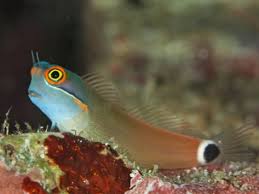The dragon (龙, lóng) is one of the most powerful and enduring symbols in Chinese culture. Unlike its Western counterpart, which is often depicted as a fearsome creature, the Chinese dragon represents wisdom, power, prosperity, and good fortune. For centuries, dragons have been a central motif in decorative arts and textile design, appearing in imperial robes, embroidered silk, porcelain, furniture, and architectural embellishments. This article explores the influence of dragons in traditional Chinese decorative art and textile craftsmanship, examining their symbolism, historical significance, and the intricate techniques used to create dragon-inspired designs.
1. The Symbolism of Dragons in Chinese Decorative Art
a. The Dragon as a Symbol of Imperial Power
Throughout Chinese history, the dragon has been closely associated with the Emperor and the ruling dynasty.
- The Five-Clawed Dragon (五爪龙, Wǔzhǎ Lóng) was an exclusive emblem of the Emperor, symbolizing supreme authority and divine right to rule.
- Four-clawed dragons were used for high-ranking officials, while three-clawed dragons appeared in art accessible to the general public.
- During the Qing Dynasty (1644–1912), the imperial throne was often referred to as the “Dragon Throne”, and the Emperor himself was known as the “Son of the Dragon”.
These associations made dragon designs a mark of prestige and status, influencing artistic traditions for centuries.
b. The Dragon as a Protector and Bringer of Good Fortune
In Chinese decorative art, dragons are not only symbols of power but also of protection, wisdom, and prosperity.
- Dragons were painted on walls, carved into furniture, and embroidered on clothing to ward off evil spirits and bring good luck.
- In Feng Shui, dragon motifs were used in home decorations to create positive energy and harmony.
- The Azure Dragon (青龙, Qīnglóng) of the East was believed to guard over cities and homes, bringing health and success.
These meanings explain why dragon imagery remains highly valued in traditional Chinese artistic expressions.
2. Dragons in Traditional Chinese Textile Design
a. Imperial Dragon Robes (龙袍, Lóngpáo)
Among the most famous dragon-related textiles in Chinese history are the Imperial Dragon Robes worn by emperors and high-ranking officials.
- The Yellow Dragon Robe (Huánglóngpáo, 黄龙袍) was reserved for the Emperor, with a five-clawed dragon embroidered in gold thread.
- These robes were made from silk, featuring elaborate patterns of clouds, waves, and auspicious symbols that represented the Emperor’s control over heaven and earth.
- The design placement was highly symbolic:
- Front and back: Represented the Emperor’s omnipresence.
- Sleeves: Allowed the wearer to “hold power in their hands.”
- Hem patterns resembling waves: Showed the balance of nature under imperial rule.
Dragon robes were crafted with extreme precision and artistry, reflecting the wealth, power, and spiritual significance of the ruler.
b. Embroidered Dragon Patterns in Silk and Brocade
Silk embroidery (xiùhuā, 绣花) and brocade weaving (jǐn, 锦) were two of the most sophisticated textile techniques used to create dragon motifs.
- Silk Embroidery (刺绣, Cìxiù):
- The most famous embroidery styles included Suzhou, Hunan, and Cantonese embroidery, each featuring intricate dragon designs with gold and silver threads.
- Embroidered dragons often appeared on wedding gowns, festival costumes, and ceremonial robes, symbolizing good luck and marital harmony.
- Brocade Weaving (锦缎, Jǐnduàn):
- Yunjin brocade (云锦, Yúnjǐn) from Nanjing was known for its luxurious dragon designs woven with real gold and silk threads.
- Dragon brocade was used for court clothing, altar decorations, and luxury furnishings.
These traditional techniques required years of training and exceptional craftsmanship, making dragon textiles a symbol of elite status and refined taste.
c. Dragon Patterns in Traditional Hanfu and Modern Cheongsam
- The Hanfu (汉服), a traditional style of Chinese clothing, often featured dragon embroidery on robes and skirts, reflecting the wearer’s social status and aspirations.
- The Cheongsam (旗袍, Qípáo), particularly during the Republic of China era, integrated dragon designs to signify elegance and cultural pride.
Even today, dragon embroidery remains a popular motif in Chinese wedding dresses, performance costumes, and high-fashion designs.
3. Dragons in Traditional Chinese Decorative Arts
a. Porcelain and Ceramic Art
Dragon motifs have been a staple in Chinese porcelain and ceramics since the Tang Dynasty (618–907 AD).
- Blue and White Porcelain (青花瓷, Qīnghuācí) from the Ming Dynasty (1368–1644) often depicted dragons flying among clouds, representing imperial power.
- Celadon-glazed ceramics featured subtle dragon designs, showing refinement and scholarly taste.
- Dragon-themed plates, vases, and teacups were often gifted to foreign diplomats as symbols of Chinese prestige.
b. Dragon Carvings in Furniture and Architectural Design
Dragons were frequently incorporated into traditional Chinese furniture and architecture, demonstrating their protective and auspicious symbolism.
- Intricate wood carvings of dragons adorned imperial thrones, palace doors, and temple beams, ensuring stability and good fortune.
- Stone relief dragons appeared on bridges, gateways, and tombstones, believed to guard sacred places.
- Lacquered furniture featured golden dragon motifs, creating luxurious and powerful aesthetics.
These artistic choices reflect the deep-rooted belief that dragon imagery could bring blessings and harmony.
c. Paper Cuttings and Lantern Art
- Traditional Chinese paper cuttings (剪纸, Jiǎnzhǐ) often depicted dragons in New Year celebrations and weddings, symbolizing luck and prosperity.
- Dragon designs in lantern festivals were believed to ward off evil spirits and attract positive energy.
These artistic traditions continue to thrive, particularly in cultural festivals and modern home décor.
4. The Influence of Traditional Dragon Art in Contemporary Chinese Design
Even in modern times, dragon imagery continues to inspire contemporary art, fashion, and interior design.
- High-fashion designers incorporate dragon embroidery into modern cheongsams, jackets, and evening gowns, blending tradition with innovation.
- Luxury home décor brands use dragon motifs in furniture, wallpaper, and textiles, reflecting timeless Chinese aesthetics.
- International art exhibitions showcase modern interpretations of dragon-inspired decorative art, highlighting the cultural pride and artistic evolution of China.
These contemporary adaptations prove that the legacy of the dragon in Chinese decorative art and textiles remains vibrant and influential.
Conclusion
The dragon has been an integral part of Chinese decorative art and textile design for centuries, symbolizing imperial authority, protection, and prosperity. From royal garments to embroidered silk, from porcelain to carved furniture, dragon motifs continue to captivate artists and designers. While rooted in tradition, dragon-inspired designs have evolved into contemporary art and fashion, ensuring that this mythical creature remains a timeless emblem of Chinese culture. Whether in historical artifacts or modern luxury designs, the dragon’s presence endures as a testament to China’s rich artistic heritage.


